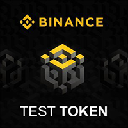-
 Bitcoin
Bitcoin $85,732.5629
-3.09% -
 Ethereum
Ethereum $2,338.6819
-5.62% -
 Tether USDt
Tether USDt $0.9990
0.02% -
 XRP
XRP $2.2102
-3.14% -
 BNB
BNB $615.2001
-1.19% -
 Solana
Solana $139.4202
-1.74% -
 USDC
USDC $0.9999
0.01% -
 Dogecoin
Dogecoin $0.2072
-1.23% -
 Cardano
Cardano $0.6623
-2.93% -
 TRON
TRON $0.2279
-0.21% -
 Chainlink
Chainlink $15.3156
0.38% -
 Litecoin
Litecoin $125.5555
6.52% -
 Avalanche
Avalanche $22.4986
2.38% -
 Sui
Sui $2.9296
-2.25% -
 Stellar
Stellar $0.2901
-0.65% -
 Toncoin
Toncoin $3.4705
-2.55% -
 Shiba Inu
Shiba Inu $0.0...01451
2.08% -
 UNUS SED LEO
UNUS SED LEO $9.0925
0.55% -
 Hedera
Hedera $0.1994
2.02% -
 Polkadot
Polkadot $4.8774
3.39% -
 MANTRA
MANTRA $7.3463
-3.87% -
 Hyperliquid
Hyperliquid $20.5703
-0.26% -
 Bitcoin Cash
Bitcoin Cash $297.2889
0.79% -
 Ethena USDe
Ethena USDe $0.9991
0.02% -
 Dai
Dai $0.9999
0.03% -
 Bitget Token
Bitget Token $4.0638
-6.44% -
 Uniswap
Uniswap $8.0785
-2.79% -
 Monero
Monero $215.3952
-1.97% -
 NEAR Protocol
NEAR Protocol $3.0574
1.20% -
 Aptos
Aptos $6.1143
8.83%
Detailed operation tutorial for purchasing Stader (SD) currency on the exchange
To purchase Stader (SD) on an exchange, users need to select a reputable platform, create an account, fund it, and place a market or limit order based on their preferences.
Jan 02, 2025 at 11:56 am

Detailed Operation Tutorial for Purchasing Stader (SD) Currency on the Exchange
Key Points:
- Understanding Stader (SD) Currency
- Selecting a Reputable Cryptocurrency Exchange
- Creating an Account
- Funding Your Account
- Placing a Buy Order
- Monitoring Your Transaction
Step 1: Understanding Stader (SD) Currency
Stader (SD) is a decentralized liquid staking platform for Proof-of-Stake (PoS) blockchains. It allows users to earn staking rewards without having to actively stake their assets or maintain their own node infrastructure. SD is the native utility token of the Stader ecosystem and serves as the medium of exchange for fees and rewards.
Step 2: Selecting a Reputable Cryptocurrency Exchange
Choosing a reliable exchange is crucial for purchasing SD. Consider the exchange's liquidity, fees, security measures, and reputation. Some reputable exchanges that offer SD include Binance, KuCoin, and Kraken.
Step 3: Creating an Account
To trade on an exchange, you need to register for an account. This process typically involves providing personal information, verifying your identity, and enabling two-factor authentication (2FA) for added security.
Step 4: Funding Your Account
Once your account is created, you need to deposit funds in order to purchase SD. Most exchanges support various payment methods, including cryptocurrencies, bank transfers, and debit/credit cards. Choose a method that suits your preferences and follow the exchange's instructions for depositing funds.
Step 5: Placing a Buy Order
To buy SD, you need to create a market or limit order. A market order executes immediately at the prevailing market price, while a limit order allows you to specify the price at which you want to buy.
- Market Order: Click on "Buy SD" and enter the amount you want to purchase. Confirm the transaction and your order will be executed at the best available market price.
- Limit Order: Select "Limit Order" and specify the price at which you want to buy SD. Enter the amount you want to purchase and click "Place Order." Your order will be executed only when the market price reaches your specified price.
Step 6: Monitoring Your Transaction
Once your buy order is placed, you can monitor its status through the exchange's trading history or portfolio page. Once the transaction is completed, the SD you purchased will be credited to your account.
Frequently Asked Questions (FAQs):
Q: What is the purpose of Stader (SD) currency?
A: SD is the native token of the Stader ecosystem and is used for fee payments, staking rewards, and governance participation.
Q: Where can I buy SD?
A: SD can be purchased on reputable cryptocurrency exchanges such as Binance, KuCoin, and Kraken.
Q: What are the benefits of using Stader?
A: Stader offers liquid staking, allowing users to earn staking rewards without actively staking their assets or maintaining their own node infrastructure.
Q: What is the current price of SD?
A: The real-time price of SD can be found on cryptocurrency exchanges or market data platforms.
Q: How do I store SD tokens?
A: SD tokens can be stored in a personal hardware wallet or in an exchange's supported wallet.
Disclaimer:info@kdj.com
The information provided is not trading advice. kdj.com does not assume any responsibility for any investments made based on the information provided in this article. Cryptocurrencies are highly volatile and it is highly recommended that you invest with caution after thorough research!
If you believe that the content used on this website infringes your copyright, please contact us immediately (info@kdj.com) and we will delete it promptly.
- Avalanche Foundation and Rain Launch the Avalanche Card Targeting Southeast Asia, Africa, and Latin America
- 2025-02-27 13:05:31
- BTC Bull Token (BTCBULL) Closes Its Presale on $3 Million Raising the Bar for Bitcoin-Themed Meme Coins
- 2025-02-27 13:05:31
- Bitcoin price drops to lows not seen since Nov. 11, 2024
- 2025-02-27 12:55:31
- Bitcoin (BTC) Price Drops Below $90K, Experiencing Its Biggest Price Drop
- 2025-02-27 12:55:31
- Bitcoin and Ethereum Are Losing Momentum—Where's the Next Big Move?
- 2025-02-27 12:50:31
- Crypto ATM Fraud Prevention Act aims to crack down on Bitcoin ATM scams targeting seniors
- 2025-02-27 12:50:31
Related knowledge
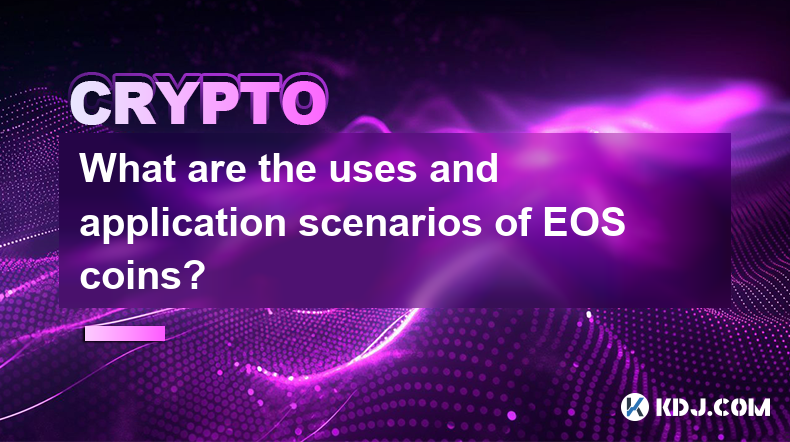
What are the uses and application scenarios of EOS coins?
Feb 26,2025 at 09:54pm
EOS: Decentralized Infrastructure for Scalable Blockchain ApplicationsKey Points:EOS enables the creation and deployment of decentralized applications with unparalleled scalability and efficiency.Its unique architecture features a high-throughput blockchain with zero transaction fees and the ability to process millions of transactions per second.EOS is ...
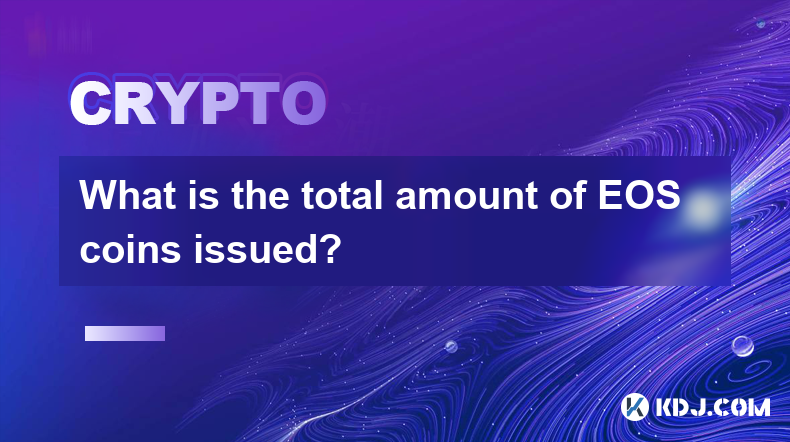
What is the total amount of EOS coins issued?
Feb 26,2025 at 06:24pm
Key PointsTotal Supply: Understand the concept of initial supply and its impact on EOS tokenomicsSupply Dynamics: Explore the various factors that affect EOS supply, including inflation and staking incentivesMarket Capitalization vs. Circulating Supply: Delve into the nuances between these metrics and their significance in token valuationDistribution an...
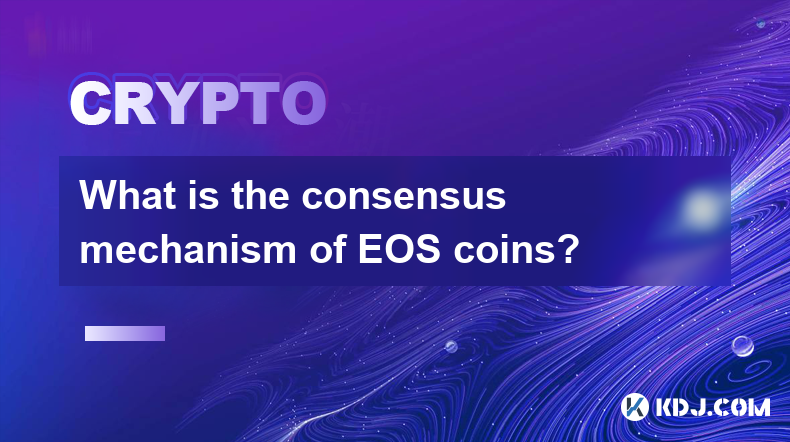
What is the consensus mechanism of EOS coins?
Feb 26,2025 at 11:19am
Key Points:EOSIO: The Foundation of EOS's Consensus MechanismDPOS: Delegated Proof-of-StakeBlock Producer ElectionsContinuous Block ProductionBlock Validation and IrreversibilityConsensus and Fork PreventionCommunity Governance and VotingWhat is the Consensus Mechanism of EOS Coins?EOS, an innovative blockchain platform, employs a unique consensus mecha...
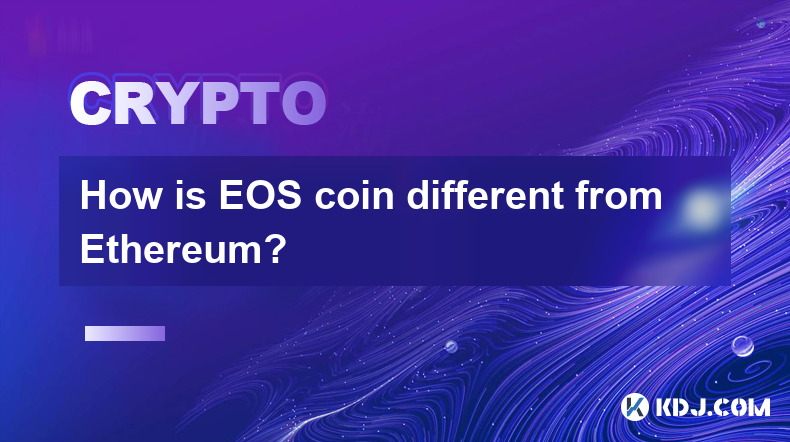
How is EOS coin different from Ethereum?
Feb 26,2025 at 10:48am
Key Points:Overview of EOS and EthereumDifferences in Consensus MechanismsAdvantages and Limitations of Each PlatformUse Cases and Target AudiencesComparison of Transaction Fees and ScalabilityCommunity Support and Development ActivityHow is EOS Coin Different from Ethereum?1. Overview of EOS and EthereumEOS and Ethereum are two of the most popular bloc...
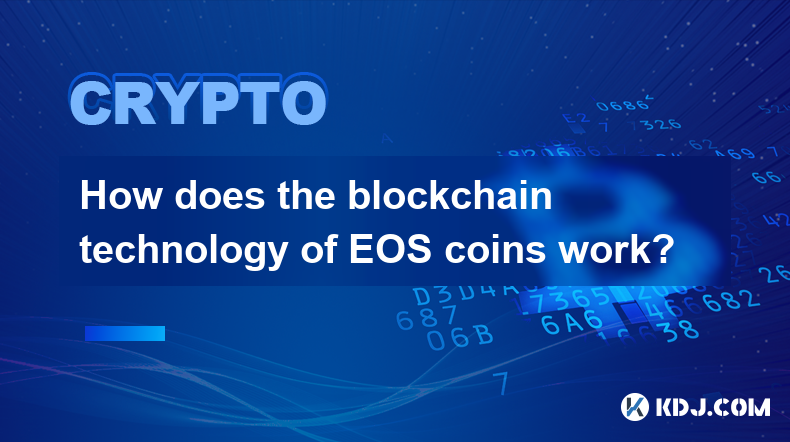
How does the blockchain technology of EOS coins work?
Feb 25,2025 at 11:13pm
Key PointsEOS is a blockchain platform that provides a high-throughput and scalable solution for decentralized applications.EOS uses a delegated proof-of-stake (DPoS) consensus mechanism to elect block producers and maintain the blockchain.EOSIO, the open-source software that powers EOS, offers a range of developer tools and features to facilitate the c...
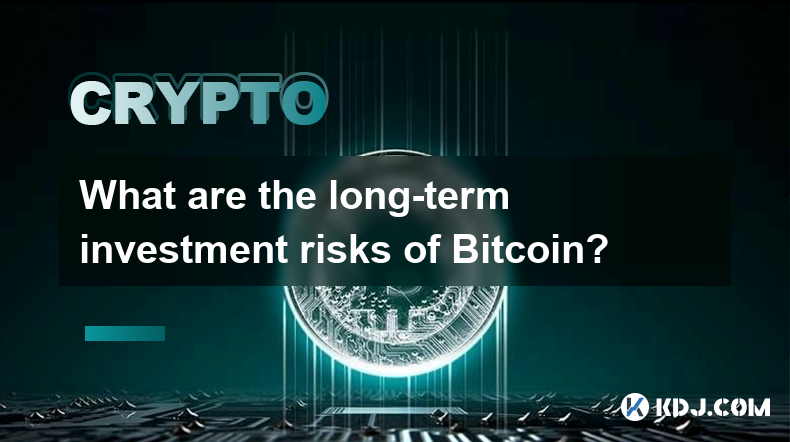
What are the long-term investment risks of Bitcoin?
Feb 22,2025 at 05:30pm
Key PointsVolatility and price fluctuationsRegulatory uncertaintySecurity risksCompetition from altcoinsMarket manipulation and scamsTransaction feesEnvironmental concernsLong-Term Investment Risks of BitcoinVolatility and Price FluctuationsBitcoin's high volatility is a double-edged sword. While it has the potential to generate substantial returns, it ...

What are the uses and application scenarios of EOS coins?
Feb 26,2025 at 09:54pm
EOS: Decentralized Infrastructure for Scalable Blockchain ApplicationsKey Points:EOS enables the creation and deployment of decentralized applications with unparalleled scalability and efficiency.Its unique architecture features a high-throughput blockchain with zero transaction fees and the ability to process millions of transactions per second.EOS is ...

What is the total amount of EOS coins issued?
Feb 26,2025 at 06:24pm
Key PointsTotal Supply: Understand the concept of initial supply and its impact on EOS tokenomicsSupply Dynamics: Explore the various factors that affect EOS supply, including inflation and staking incentivesMarket Capitalization vs. Circulating Supply: Delve into the nuances between these metrics and their significance in token valuationDistribution an...

What is the consensus mechanism of EOS coins?
Feb 26,2025 at 11:19am
Key Points:EOSIO: The Foundation of EOS's Consensus MechanismDPOS: Delegated Proof-of-StakeBlock Producer ElectionsContinuous Block ProductionBlock Validation and IrreversibilityConsensus and Fork PreventionCommunity Governance and VotingWhat is the Consensus Mechanism of EOS Coins?EOS, an innovative blockchain platform, employs a unique consensus mecha...

How is EOS coin different from Ethereum?
Feb 26,2025 at 10:48am
Key Points:Overview of EOS and EthereumDifferences in Consensus MechanismsAdvantages and Limitations of Each PlatformUse Cases and Target AudiencesComparison of Transaction Fees and ScalabilityCommunity Support and Development ActivityHow is EOS Coin Different from Ethereum?1. Overview of EOS and EthereumEOS and Ethereum are two of the most popular bloc...

How does the blockchain technology of EOS coins work?
Feb 25,2025 at 11:13pm
Key PointsEOS is a blockchain platform that provides a high-throughput and scalable solution for decentralized applications.EOS uses a delegated proof-of-stake (DPoS) consensus mechanism to elect block producers and maintain the blockchain.EOSIO, the open-source software that powers EOS, offers a range of developer tools and features to facilitate the c...

What are the long-term investment risks of Bitcoin?
Feb 22,2025 at 05:30pm
Key PointsVolatility and price fluctuationsRegulatory uncertaintySecurity risksCompetition from altcoinsMarket manipulation and scamsTransaction feesEnvironmental concernsLong-Term Investment Risks of BitcoinVolatility and Price FluctuationsBitcoin's high volatility is a double-edged sword. While it has the potential to generate substantial returns, it ...
See all articles














































































